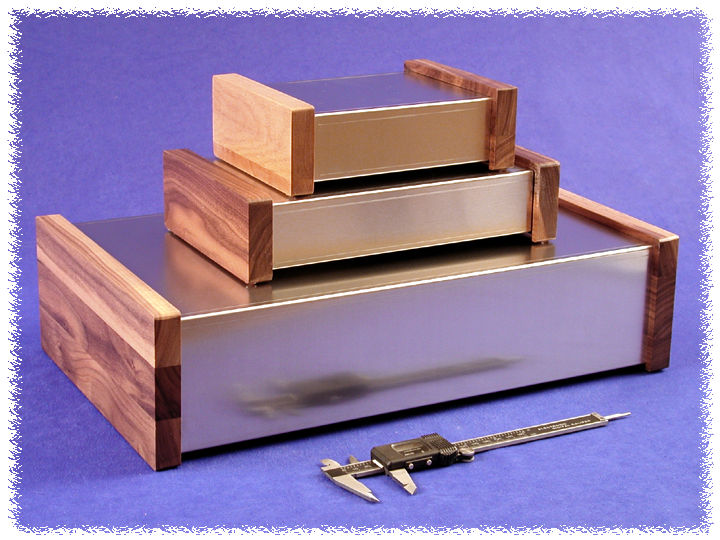 For the most part, electronics packaging follows the dictum stated by Louis Henry Sullivan, the 19th century architect known as the Father of the Modern Skyscraper: “…form ever follows function, and this is the law. Where function does not change form does not change.” For many years, the function of most commercially available electronic packaging has been to protect circuitry in the harsh world of indoor and outdoor industrial environments, and hence most of the enclosure systems had the look of industrial machinery.
For the most part, electronics packaging follows the dictum stated by Louis Henry Sullivan, the 19th century architect known as the Father of the Modern Skyscraper: “…form ever follows function, and this is the law. Where function does not change form does not change.” For many years, the function of most commercially available electronic packaging has been to protect circuitry in the harsh world of indoor and outdoor industrial environments, and hence most of the enclosure systems had the look of industrial machinery.
Today, however, electronic devices are a part of everyday life – not just in the factory, but also in homes, museums, theaters, schools, hospitals, restaurants, and other public places where external appearance is an important part of the function. So devices must look like they fit in and not be a discordant note amid their surroundings.
While items that are supplied in mass volumes have always made it possible for a company to hire a packaging designer to create a unique look for its products, many electronic systems supplied today do not have that sort of demand, yet still are required to meet the aesthetic requirements of their target environment. Fortunately, enclosure manufacturers today are taking those requirements into account when creating new cabinetry.
OKW Enclosures is a leader in this area. For instance, consider their Interface-Terminal series: a range of accessory kits now allow these plastic enclosures to be flush fitted in walls or control panels to suit applications with very high architectural standards, including historical buildings. The kits offer three options: off-white to match the standard enclosure color, painted to match the building color scheme (metalic gray, for example), or with water transfer printing (a faux-wood finish, say).

OKW Enclosures' Interface-Terminal series adapts aethetically to different environments
Hammond Manufacturing has designed a series of case to replicate the look of consumer electronics from the 1950s and '60s. Models in the retro 1444 / 1441CWW desktop chassis series are fabricated from aluminum – with a natural finish in the case of the 1444CWW, and with a black, powder-coated finish for 1441CWW – and fitted with walnut end panels on the shorter sides. They come in six sizes, ranging from 7 x 5 x 2 in. to 17 x 10 x 4 in., and can be had starting at under $48 in single quantities.

Hammond Manufacturings' 1444/1441CWW series offer a retro look
More recently, the advent of the Raspberry Pi microprocessor has given enclosure manufacturers the chance to experiment with new designs, ones that reflect the “fun” function of the inexpensive, credit-card-sized board that EP editor Jim Harrison describes as “really cool.” Bud Industries created the Pi Plate, a unique round red enclosure that is translucent, while Polycase developed the Pi Box to provide a sophisticated, Art Deco look. NYC-based Adafruit offers the Rainbow Pibow, a multicolored box with a clear top while bitcrafts, headquartered in Dresden, Germany, developed an all wood case called the Bramble Pi. Not only are these designs non-traditional and unique, but in all instances the cases are priced under $20.

Raspberry Pi computer board cases from (clockwise from top left) Bud Industries, Polycase, Adafruit, and bitcrafts.
Advertisement
Learn more about Bud IndustriesHammond ManufacturingOKW EnclosuresPolycase





